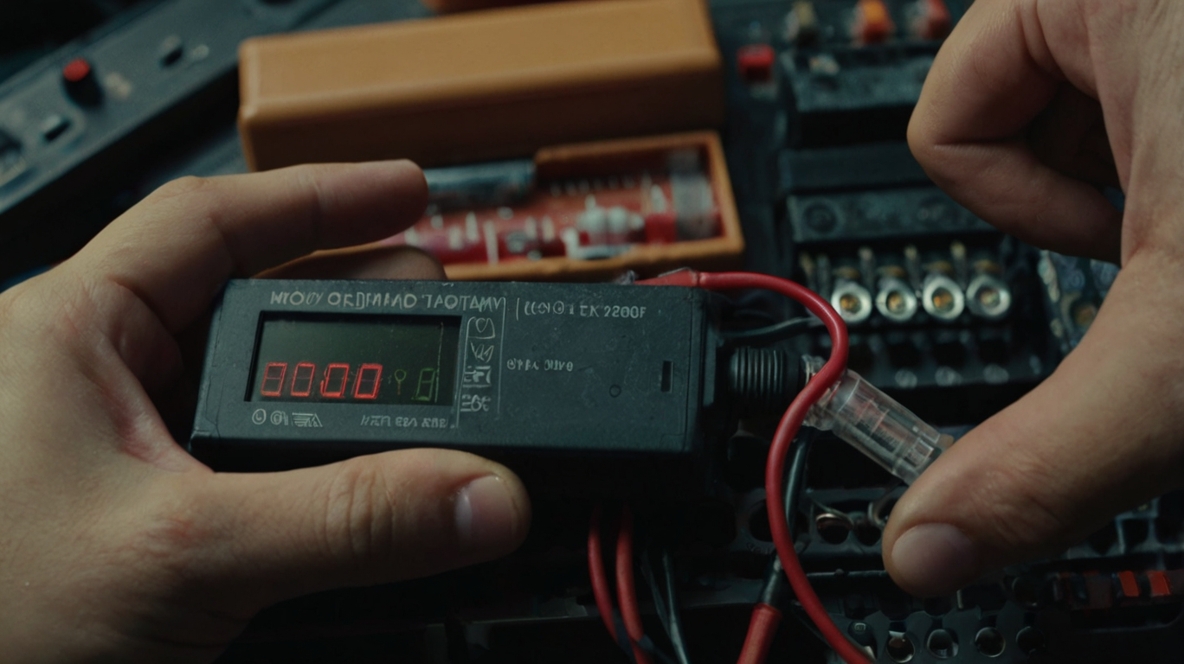
Checking your car battery’s charge level is an essential part of maintaining your vehicle. A battery tester allows you to quickly determine if your battery is holding a charge, potentially saving you from getting stranded with a dead battery. In this guide, I’ll walk you through the steps of using a tester to check your car’s battery charge level.
Tools You’ll Need:
- Digital multimeter (or a dedicated battery tester)
- Safety gloves
- Safety glasses
Step-by-Step Guide
1. Turn Off Your Vehicle
- Turn off the engine and accessories: Make sure the car's engine, headlights, and all accessories are turned off before checking the battery. This ensures accurate readings and safety.
2. Set Up the Multimeter
- Switch to DC voltage: Set your multimeter to the DC voltage setting (V), ensuring it's capable of reading 12-volt batteries. Most automotive batteries are 12.6 volts when fully charged.
- Set the range: If your multimeter is not auto-ranging, set it to 20 volts to get a precise reading.
3. Connect the Multimeter to the Battery
- Identify the battery terminals: The positive terminal is typically marked with a plus sign (+) and has a red cover, while the negative terminal is marked with a minus sign (-) and is black.
- Place the probes:Connect the red probe to the positive terminal.Connect the black probe to the negative terminal.
- Connect the red probe to the positive terminal.
- Connect the black probe to the negative terminal.
4. Read the Voltage
- Normal readings: A fully charged car battery should read 12.6 to 12.8 volts when the car is off. Here’s what different readings mean:12.6 – 12.8 volts: Battery is fully charged.12.4 – 12.6 volts: Battery is charged but not full.12.2 – 12.4 volts: Battery is partially discharged.12.0 – 12.2 volts: Battery is low and should be recharged soon.Below 12.0 volts: Battery is severely discharged and may need to be replaced.
- 12.6 – 12.8 volts: Battery is fully charged.
- 12.4 – 12.6 volts: Battery is charged but not full.
- 12.2 – 12.4 volts: Battery is partially discharged.
- 12.0 – 12.2 volts: Battery is low and should be recharged soon.
- Below 12.0 volts: Battery is severely discharged and may need to be replaced.
5. Check While the Engine is Running (Optional)
- To check if your alternator is properly charging the battery, you can perform a test with the engine running:Start the engine: With the engine running, check the voltage again using the same steps.Expected reading: The multimeter should display a reading of 13.7 to 14.7 volts if the alternator is charging the battery correctly.Too high or too low?: If the voltage is higher than 14.7 volts or lower than 13.7 volts, your alternator may be malfunctioning.
- Start the engine: With the engine running, check the voltage again using the same steps.
- Expected reading: The multimeter should display a reading of 13.7 to 14.7 volts if the alternator is charging the battery correctly.
- Too high or too low?: If the voltage is higher than 14.7 volts or lower than 13.7 volts, your alternator may be malfunctioning.
6. Remove the Probes and Turn Off the Multimeter
- Disconnect carefully: Remove the probes, starting with the black (negative) one, followed by the red (positive) one.
- Turn off the multimeter: Ensure you switch off the tester to preserve battery life.
Frequently Asked Questions (FAQ)
Q: How often should I check my car battery’s charge?A: It’s a good practice to check your battery’s charge every few months or whenever you notice slow starts or electrical issues.
Q: What should I do if my battery voltage is low?A: If the battery is reading below 12.0 volts, recharge it as soon as possible. If the battery cannot hold a charge, it may need replacement.
Q: Can I test the battery while it’s still connected to the vehicle?A: Yes, most battery tests can be done with the battery connected, though some prefer disconnecting the battery to avoid interference from other systems.
Q: What does it mean if my battery reads over 14.7 volts with the engine running?A: This could indicate an overcharging issue with your alternator, which may damage the battery and other electrical components.
Using a multimeter to check your battery’s charge level is quick and straightforward, and it can help you avoid unnecessary breakdowns. By keeping an eye on your battery’s health, you can ensure it’s always ready when you need it.

